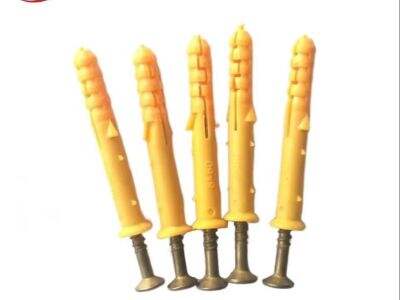Insulation is very important when we want to keep a building warm during the cold winter and cool during the hot summer months. It is a special material that traps heat inside a building when it is cold and prevents hot air from entering when it is hot outside. That way, it creates a comfort within us regardless of external weather or phenomena. Did you know that the type of fasteners you use to install your insulation also make a difference in its performance? Thermal insulation fastener and its AdvantagesOver the general. These insights will assist you in determining the most appropriate foam board fasteners for your insulation project.
What is a Fastener?
Now before we talk about the fastener types, let’s talk about fastener itself. A fastener is typically a tool or piece of hardware that helps to secure one object with another. As in the case of insulation, fasteners are utilized to secure the insulation material to the building's walls, floors, or ceilings. These are an essential part of keeping the insulation where it is and functioning properly.
There are a types of fastener for insulation
There are two dominant types of fasteners when it comes to insulation: thermal insulation fasteners and other foam fasteners.
Insulation fasteners are specifically made for insulation applications. This causes them to be designed to perform optimally with the unique qualities of insulation, thus enhancing the performance of insulation.
Traditional fasteners, in contrast, are mostly used for regular construction work. They’re the kind of fasteners you might see in many other construction environments not dedicated to insulation.
Pros and Cons of Each Type of Fastener
But you may be thinking—which fastener is more suitable for insulation—thermal insulation fasteners or normal insulation fasteners? Let’s examine some of the pros and cons of each type more closely.
Thermal insulation fasteners help reduce thermal bridging. Thermal bridging occurs when heat transmits from material to material, leading to energy loss. Thermal insulation fasteners are typically more energy efficient than traditional fasteners because they help to reduce this heat transfer. They are also less prone to rust, so can last longer in some cases. Moreover, they can be put together quicker than traditional fasteners, which can save time during construction.
Caveat: We should mention that thermal insulation fasteners usually cost more than "conventional" fasteners. They also may not be as durable over time, meaning you might have to replace them sooner than with standard fasteners.
It is more economical as traditional fasteners are usually cheaper than thermal insulation fasteners and more durable as well. Since they are widely available, you can find them easily whenever you need them for quick projects. This can be a huge advantage when working with a limited timeframe.
While they do come with varying advantages, classic fasteners also come with their disadvantages. They can be more susceptible to thermal bridging, which means they may not be as efficient when it comes to insulation compared to thermal insulation fasteners. They are also more susceptible to rusting with time, which could damage the insulation material and affect its efficiency.
Choosing the Right Fasteners
Consider your specific insulation needs when choosing fasteners for your insulation project Think about things like your budget, how long you want the fasteners to last, and what kind of insulation material you are working with.
Thermal insulation fasteners can be the preferred choice of the option if you are looking for effective thermal insulation and have a deeper pocket. Conversely, if you seek a more economical option that doesn't sacrifice durability and longevity, traditional fasteners may better serve your needs.
Also, it is critical to consider what type of insulation material you are utilizing. Fiberglass, for instance, may require one fastener while rigid foam may require something else. That's something to keep in mind to decide.
Before the Insulation Installation: What to Know
It is highly likely there are or will be even better and faster fasteners for insulation installation as technology progresses. To harken back to an earlier point made, it is already possible to use special screws — self-tapping insulation screws — to attach insulation materials without pre-drilling holes. This helps the installation step to go smoother and faster.
By using new, improved insulation technology, we could see some alterations in the fastening styles. Evolving insulation materials → which means working with new fasteners, light and thin vs old gunny sacks type used. This can lead to new possibilities for insulation installations within buildings.
 EN
EN
 AR
AR
 BG
BG
 HR
HR
 CS
CS
 DA
DA
 NL
NL
 FI
FI
 FR
FR
 DE
DE
 EL
EL
 HI
HI
 IT
IT
 JA
JA
 KO
KO
 NO
NO
 PL
PL
 PT
PT
 RO
RO
 RU
RU
 ES
ES
 SV
SV
 TL
TL
 IW
IW
 ID
ID
 SR
SR
 UK
UK
 VI
VI
 HU
HU
 TH
TH
 TR
TR
 FA
FA
 MS
MS
 GA
GA
 IS
IS
 LA
LA
 MN
MN
 NE
NE
 KK
KK
 UZ
UZ



